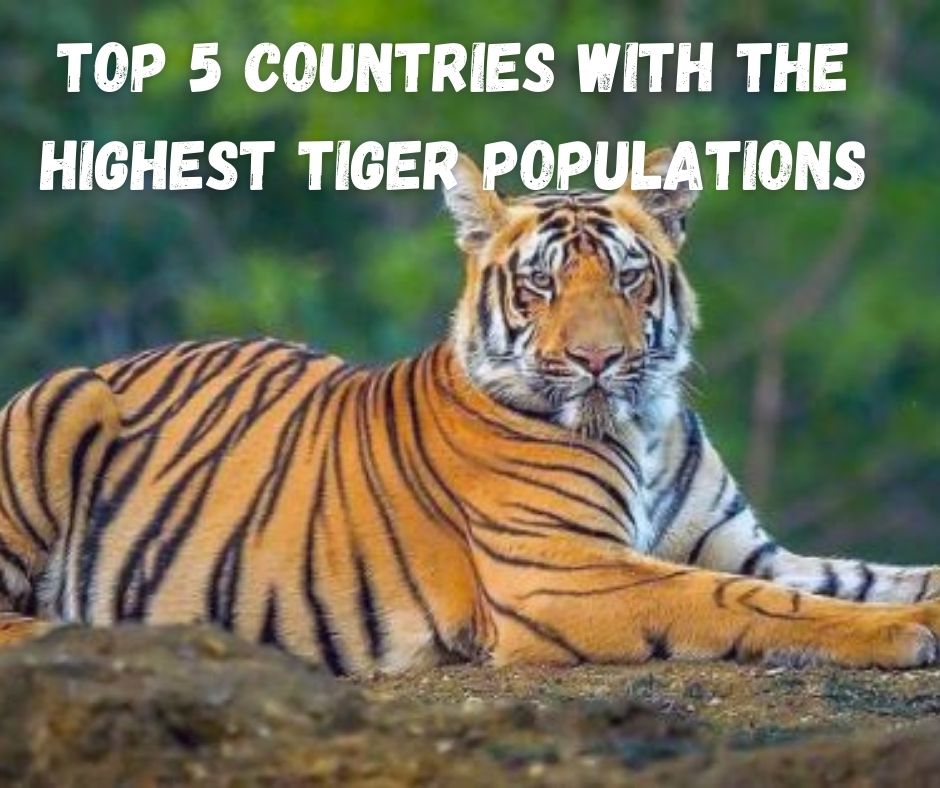1. India – 2,967 Tigers
India, which is home to the vast majority of the world’s wild tiger population, is a cornerstone of global tiger conservation. These recognizable large cats have a variety of habitats, from deep forests to mangrove swamps, and India’s Project Tiger, initiated in 1973, has been essential in ensuring their survival. Tigers depend on national parks and wildlife sanctuaries like the Sundarbans and Ranthambhore as their primary home. Through programs like the National Tiger Conservation Authority, the enforcement of anti-poaching laws, and the promotion of community involvement, the Indian government has made a commitment to tiger conservation. India’s tiger population has persevered in the face of adversity and coordinated efforts have led to a slow but steady expansion. The goal of ongoing conservation efforts is to maintain India’s rich biodiversity while ensuring that tigers and local communities can coexist.

2. Russia – 433 Tigers
Russia’s national animal is the Amur tiger, sometimes referred to as the Siberian tiger. This subspecies, which is found in the vast and isolated regions of the Russian Far East, especially in the Amur-Ussuri region and the Sikhote-Alin mountain range, suffers exceptional difficulties. In order to save the Amur tiger, Russia has made major conservation initiatives that emphasize community involvement, habitat protection, and anti-poaching methods. Important protected places are essential to preserving this endangered species, such as the Land of the Leopard National Park and the Sikhote-Alin Biosphere Reserve. Russia emphasizes the significance of cross-border conservation measures for the survival of this remarkable big cat by working with foreign partners to monitor and manage the Amur tiger population.

3. Indonesia – 371 Tigers
The severely endangered Sumatran tiger is found in Indonesia, mostly on the island of Sumatra. The Sumatran tiger, one of the smaller tiger subspecies, is seriously threatened by habitat loss and poaching. Protected areas must be established, anti-poaching laws must be enforced, and local communities must be involved in conservation activities. Their survival is further threatened by human-wildlife conflict and rapid deforestation. Recognizing these unique big cats’ critical role in preserving biodiversity and ecological balance in Sumatra’s forests, the Indonesian government, non-governmental organizations, and foreign partners have joined forces to launch collaborative programs aimed at securing the future of these iconic animals. For the Sumatran tiger to persist in its natural habitat, ongoing efforts are essential.

4. Nepal – 355 Tigers
Nepal has demonstrated great achievement in recent times, making it a crucial bastion for the survival of tigers. Through strict anti-poaching laws and habitat preservation, the nation has made significant efforts to protect and grow its tiger population. These magnificent cats depend on the lowland Terai Arc Landscape, which stretches throughout southern Nepal. Initiatives for conservation, including as community engagement and cross-border cooperation with India, have helped tiger populations rebound. Nepal’s dedication to conservation is demonstrated by its early achievement of its 2022 aim of doubling the number of tigers. The accomplishment highlights Nepal’s commitment to protecting its abundant biodiversity and guaranteeing the long-term survival of the famous Bengal tiger inside its boundaries.

5.Thailand – 148 to 149 Tigers
The severely endangered Indochinese tiger (Panthera tigris corbetti) subspecies is found only in Thailand. These tigers, which have historically been common, are seriously threatened by habitat degradation, poaching, and conflicts with people. The major goals of Thailand’s conservation initiatives are to protect the species’ surviving habitats, put anti-poaching measures in place, and encourage community involvement. Huai Kha Khaeng Wildlife Sanctuary and other protected places are essential to their conservation. In an effort to guarantee the Indochinese tiger’s survival and recovery, Thailand’s government works with foreign organizations to address these issues. Sustaining the region’s natural equilibrium, protecting Thailand’s tiger population, and adding to global biodiversity all depend on ongoing efforts.


